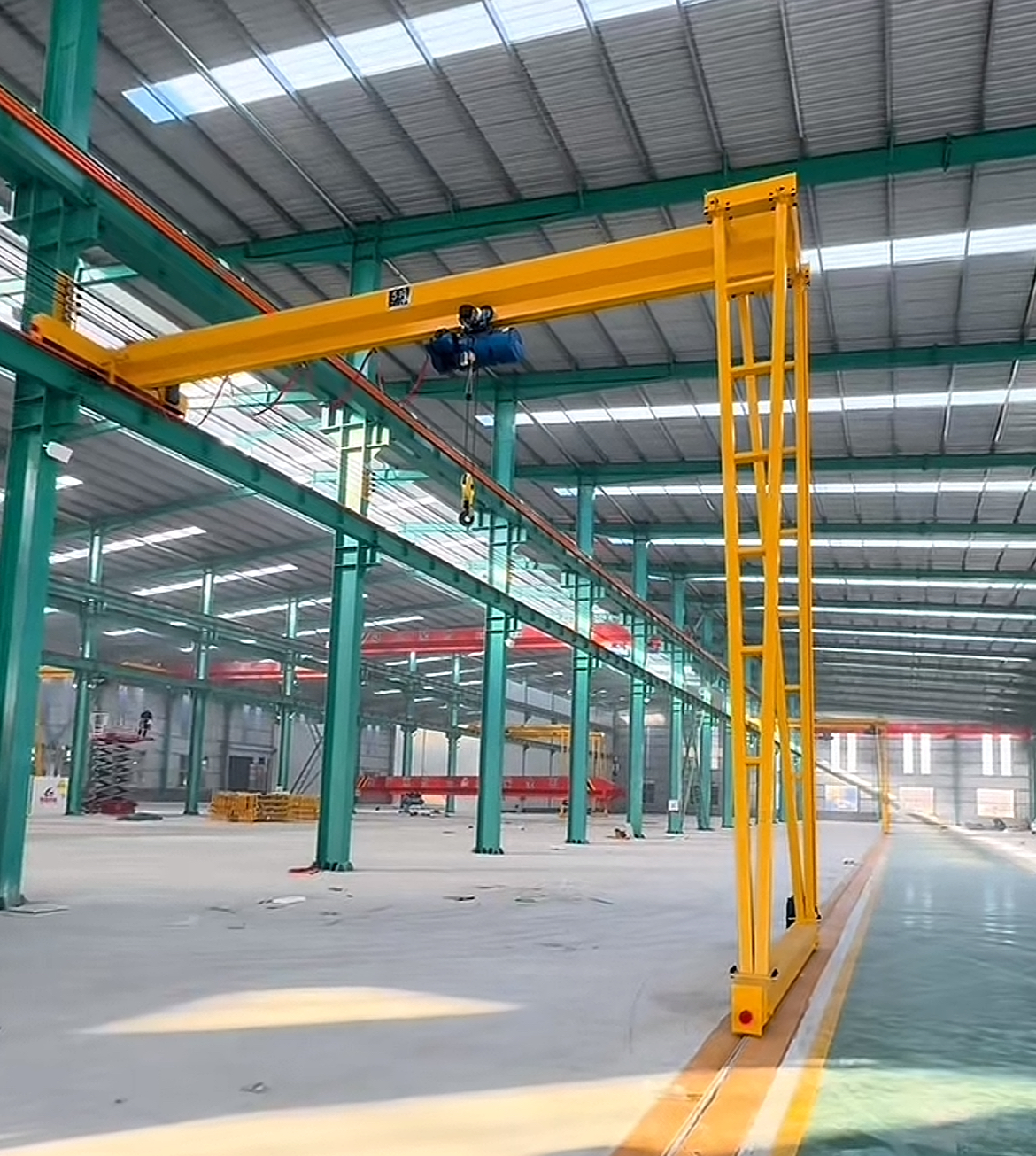Core Spatial Challenges
Factory space constraints hinder lifting equipment. Dense columns (6-8m spacing) fragment paths. Irregular layouts create dead zones. Overhead obstructions (beams, pipes) waste vertical space. Semi-gantry cranes offer superior spatial adaptability vs. rigid gantry cranes.
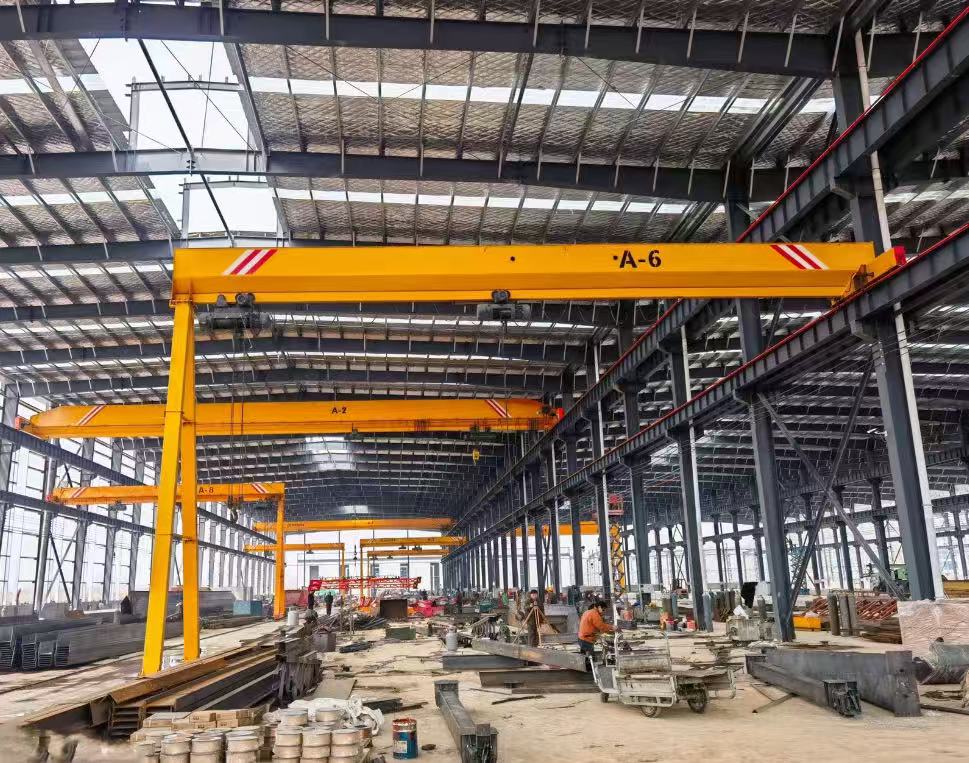
Application Limits of Gantry Cranes
Designed for open areas, the traditional gantry crane struggles in confined spaces due to its rigid "cross-type" structure:
Inflexible Tracks: Requiring two parallel, equal-length tracks aligned with its width, dense columns often block installation. Forcing uneven track spacing causes imbalance (e.g., 30mm cart sway) and safety risks, reducing usable area and spatial adaptability.
Limited Coverage: Linear cart movement creates blind spots in staggered layouts (e.g., adjacent assembly/storage). Coverage often falls below 65%, necessitating manual handling and wasting space.
Fixed Height Occupation: A fixed gantry height (4-8m) conflicts with overhead obstructions. Reduced lifting height (e.g., 5m to 3.5m) prevents high-level access, crippling vertical space utilization.
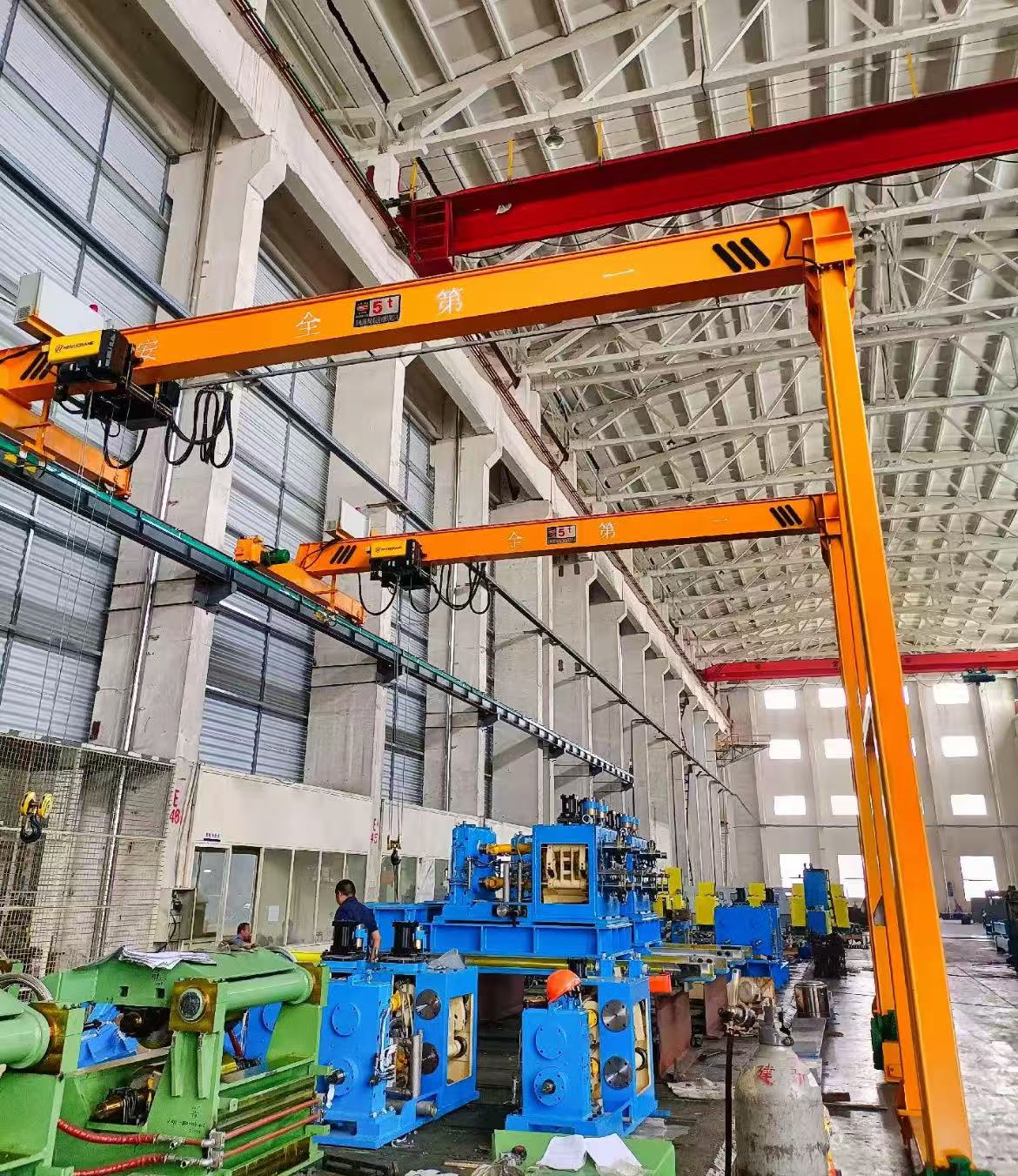
Semi-Gantry Crane Solutions
Semi-gantry crane design specifically addresses these issues through asymmetry and enhanced spatial adaptability:
Flexible Tracks: Only one fixed track (wall/column/axis mounted) is needed; the other side uses ground wheels or a support. This enables installation around columns and through equipment gaps, increasing path coverage to 98% and improving spatial adaptability.
Expanded Coverage: Single-track flexibility allows curved paths or 90° turns. Rotatable trolleys reach deep into equipment gaps, achieving up to 92% coverage (27% > gantry crane) and eliminating manual handling for heavy items.
Optimized Height: Customizable beam heights (2-6m) adapt to low ceilings or complex overheads. Achieving higher lifts (e.g., +0.5m) enables full use of vertical space, boosting high-shelf utilization from 60% to 90%.
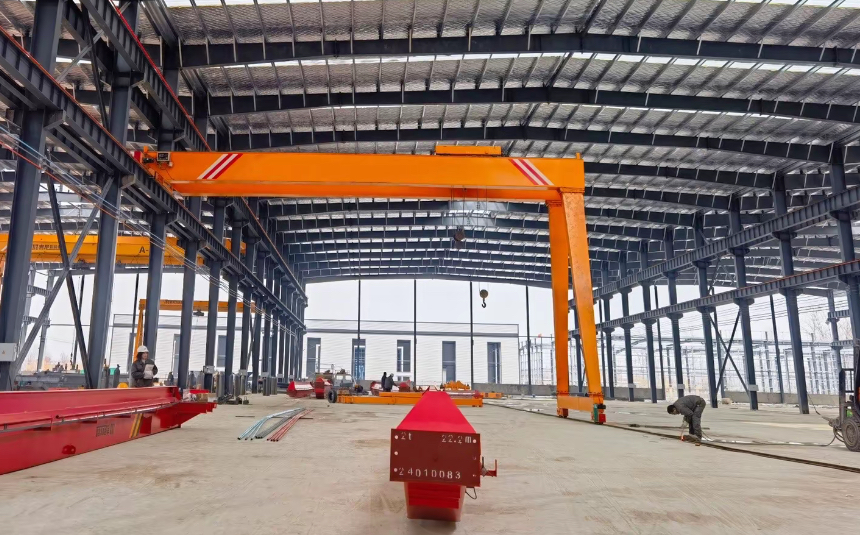
Space Utilization Improvement: Empirical Data
Direct comparison highlights the semi-gantry crane advantage:
| Comparison Metrics | Gantry Crane | Semi-Gantry Crane |
|---|---|---|
| Effective Track Length | 45m (column obstructed) | 60m (continuous) |
| Covered Operating Area | 650m² (65%) | 920m² (92%) |
| Lifting Blind Spots | 8 (column proximity) | 2 (minor corners) |
| Vertical Space Utilization | 70% (height limited) | 95% (adjustable height) |
Post-retrofit, space utilization rose 27% and lifting efficiency increased 35%, overcoming column/equipment constraints. This demonstrates the semi-gantry crane's superior spatial adaptability versus the gantry crane in confined spaces.
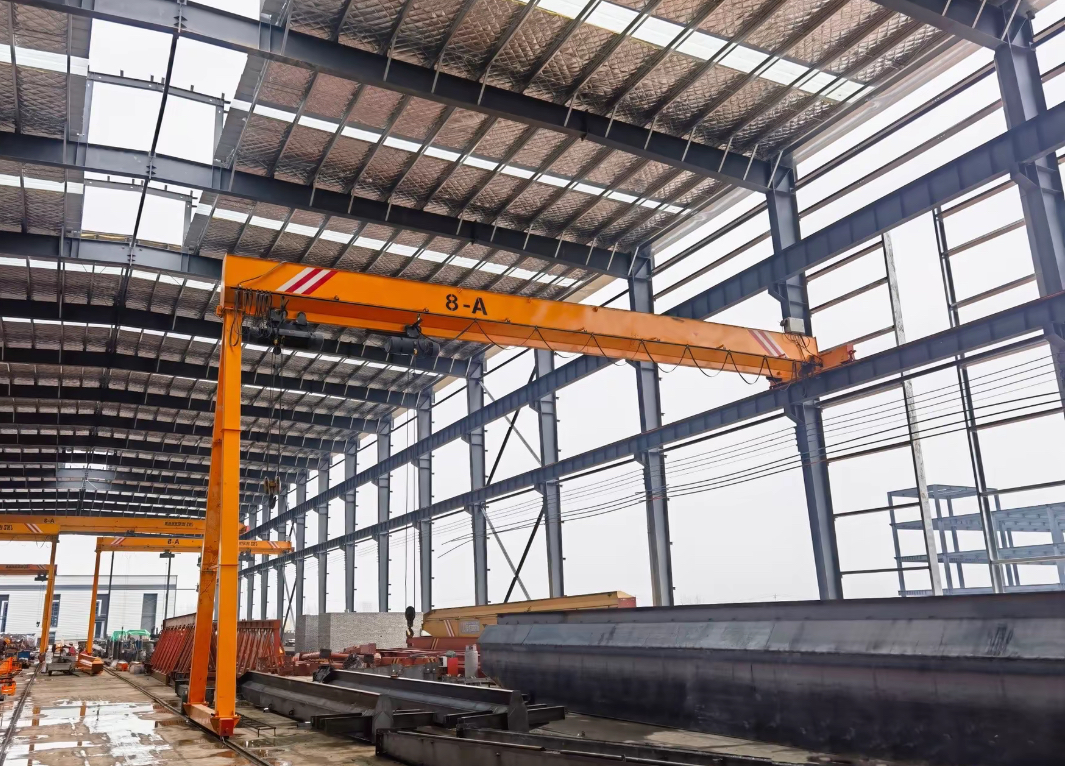
Selection Guide: Context Dictates Optimal Solution
Prioritize Gantry Cranes: Best for open, column-free areas (large storage, yards) with unobstructed tracks and minimal height constraints. Maximizes stability and capacity where spatial adaptability is less critical.
Prioritize Semi-Gantry Cranes: Essential for column-dense, complex-layout factories (machining, auto parts, precision assembly), especially corners. Excels in confined spaces by enhancing spatial adaptability and obstacle avoidance.
Both aim to maximize space utilization: gantry cranes for "large-scale" openness, semi-gantry cranes for "precision" confinement. Future advancements will further enhance their spatial adaptability across industrial environments.
